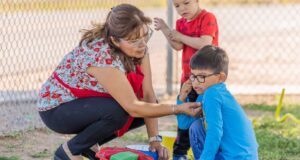When your students run into a road block, your natural instinct as a teacher is to help them. And while there’s nothing wrong with that, try taking a step back to let them experiment with solving a problem on their own.
Try these three techniques to help encourage independent thinking in the classroom:
- Critical Thinking: When a problem arises, ask your young learners how they would solve it on their own. Repeating this approach will help create independence through habit and teach them to think critically.
- Activities With Choices: Set up activities where your students have to make various choices. This will help with allowing your students to express themselves and make their own decisions.
- Helpful Tips: Give them constructive feedback. This will teach your students how they can improve, as well as guide them on how they can solve the problem if it happens again.
Below are some activities you can incorporate that will set your young students on the path to being independent.
Infant Activity: For infants, while they’re on the floor, place toys just a little bit out of reach. They will move and wiggle toward the one they want the most. And when they get it, they will be proud of their accomplishment.
Toddler Activity: When it comes to play time for toddlers, it’s beneficial to have marked areas in the classroom, such as places to build with blocks, baskets with dress-up clothes, chairs and low tables with art supplies. This supports toddlers’ growing abilities to choose activities and use appropriate materials.
4 to 5 Year Old Activity: Have your students clean up their own mess. Along with independence, this will also teach them responsibility. Give them opportunities to pick out their own books to read during quiet time. Be sure the books are reachable.
Set up each students’ own area to put their coats, backpacks and lunch pails when they first get to the classroom. Be sure the cubbyholes and coat hooks are at low height. This will build competence and confidence while letting them know they have an area of their own.

